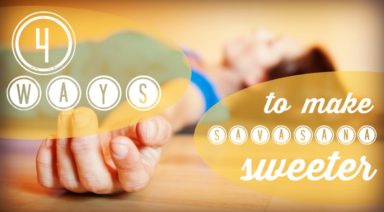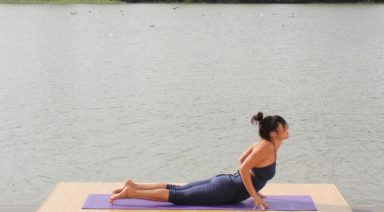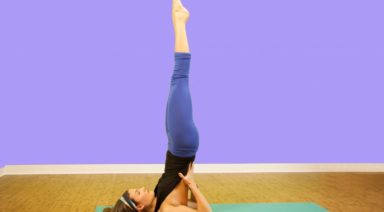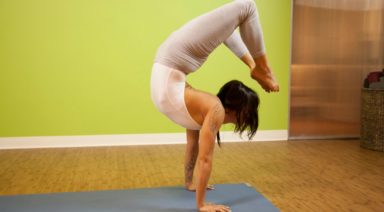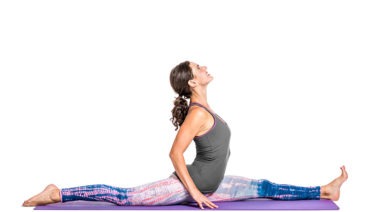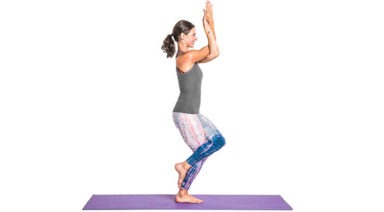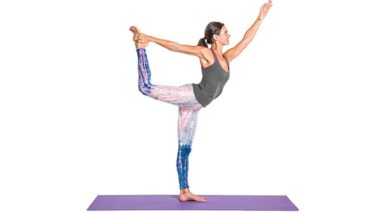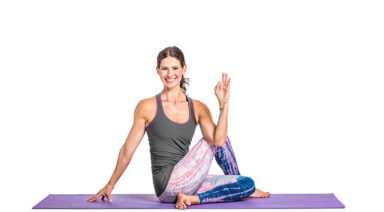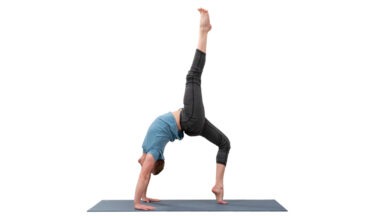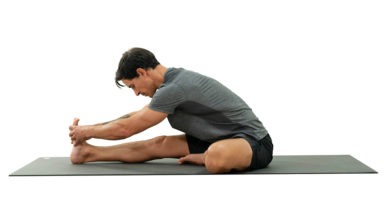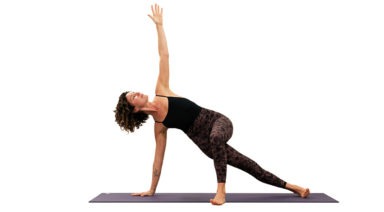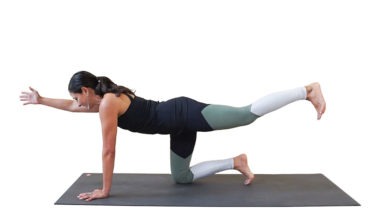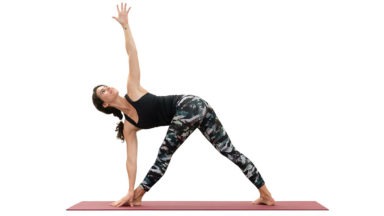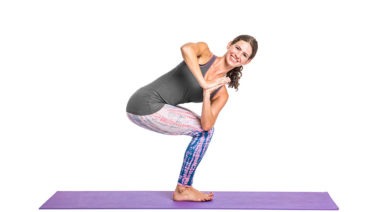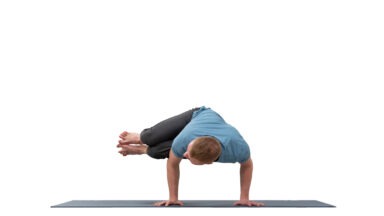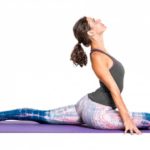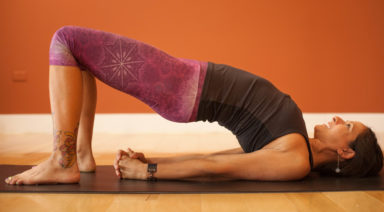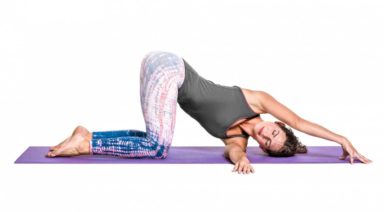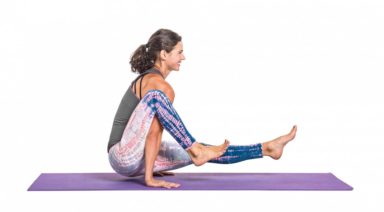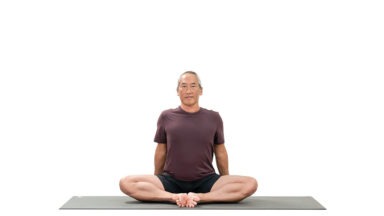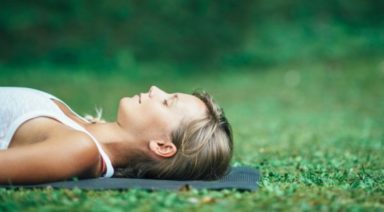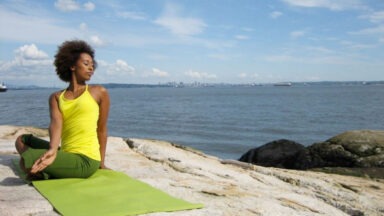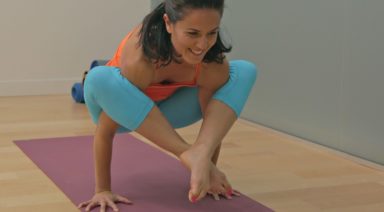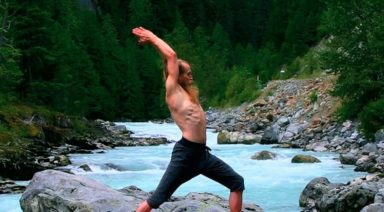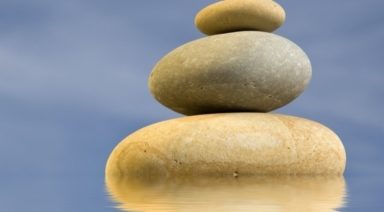5 Hidden Benefits of Downward-Facing Dog
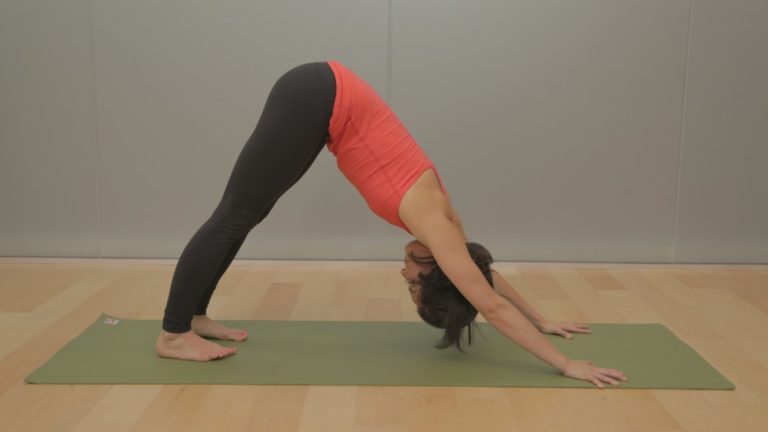
If you’ve attended a yoga class, you’ve probably done downward-facing dog pose. Downward-facing dog is a foundational pose found in various vinyasa yoga flows, and for many of us, we initially feel the stretch in the arms, the back, and the legs. That’s the obvious, but there are so many other benefits to exploring downward-facing dog. Downward-facing dog is a very challenging pose, as the muscles are working to hold the pose against gravity.
5 Hidden Benefits of Downward Facing Dog:
Strengthens Abdominal Muscles
Envision turning downward-facing dog right side up into boat pose. Just as you would with boat pose, engaging the belly in downward-facing dog strengthens and abdominal muscles that support the spine.
Improves Circulation
Many tend to forget that downward-facing dog is an inversion! As the hips lift and the head drops below the heart, the pull of gravity is reversed and fresh blood flows, aiding in circulation.
Improves Digestion
Although downward-facing dog is not a full bend or fold, the pose does allow for slight abdominal compression by drawing the navel into the spine. The pose compresses the organs like the kidneys, liver and the spleen, aiding in digestion.
Tones the hands and feet
Downward-facing dog is weight-bearing pose that prepares hands and feet for standing and arm balancing poses.
Decreases Anxiety
Stretching the cervical spine and the neck allows the head and your mind to relax.
So the next time you’re in downward-facing dog, enjoy the obvious and not-so-obvious benefits of the pose!
4 Ways to Make Savasana Sweeter
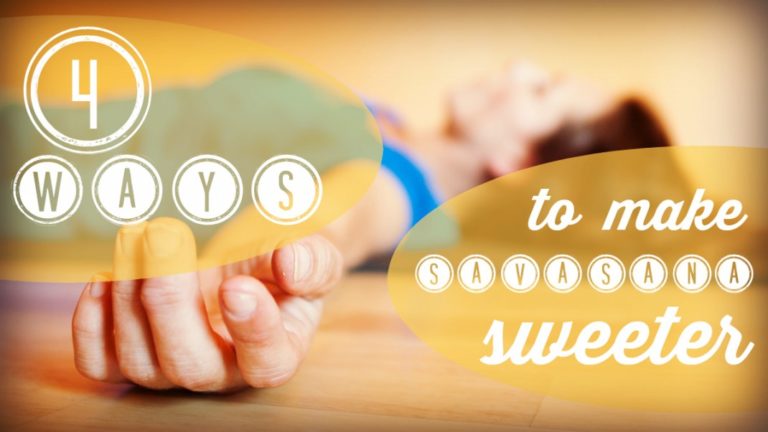
At the end of yoga class, it’s often joked that Savasana is the most difficult pose of all. It didn’t take me long to realize that there may be some truth to this joke. Many beginners struggle with Savasana, either falling asleep or hanging on to their thoughts, forbidding clarity and relaxation to sink in.
One of the reasons I developed a commitment to yoga was the paltry $5 difference between signing up for only yoga classes and tacking on a full gym membership. I seldom went upstairs to the gym. Movement on the machines felt unnatural and I was intimidated by the bulky dudes in tight shirts. Meanwhile, I found the yoga classes soothing. I sweated out so many toxins and worked on my flexibility, but there was something that regularly happened in class that annoyed the sweet prana right out of me.
When it was time for the exquisitely long 15 minutes of well-deserved Savasana, some unknowns upstairs would start their heavy weightlifting routine. Loud thuds and trembling shock waves distracted my focus and raised feelings of anger and rage. I thought about going upstairs to complain, but I wasn’t inclined to start an argument with buff dudes who could kick my skinny ass.
I didn’t realize until my teacher training that this aggravation was allowing me to practice aparigraha, or non-attachment, by letting go of thoughts and emotions, either positive or negative. After about four months, those thuds sounded like a light knock on the door of my perception; I had learned to withdraw from my senses and my active mind.
Here are four ways to improve the Savasana experience, both in your personal practice and when you’re teaching class.
Learn and Practice Yoga Nidra
Yoga Nidra is a technique that guides students through various parts of their bodies. It works by increasing the awareness of sensations in the muscular, connective and nerve tissues by breathing into them to send a signal of relaxation.
If done right, one can feel the energy flow up and down through the chakras. Eventually, it’s possible to dissolve sensations from the body altogether. It’s like having a voice-guided eraser that slowly fades your body into the ether.
There are many Yoga Nidra meditation recordings out there, and some teachers like to guide their students through a session during Savasana. However, due to time limits at studios, it’s best to incorporate in a home practice to allow yourself the extra time.
Mystical Music or Silence
Traditionally, yoga was done without music, much less meditation. It wasn’t until yoga came to the West that teachers started to notice the addition of music adds more flow and rhythm to a class. In the end, it really comes down to the preference of the individual.
Being a “Cosmic DJ” is no easy feat. We often let our personal musical preferences filter into our sacred tracks, be it mantras, Kirtan, white sounds or Enya. I’ve had some teachers play great songs through class and then choose an awful track for Savasana that was distracting or too intense.
My recommendation is to experiment and find tracks that take you to another dimension. If you live in a quiet town or deep in the woods, these locations allow for moments of silence; work with that and get a little Tibetan bowl timer in case you drift too deeply.
Visualizations
One of the most powerful resources available to us is our imagination. I’ve found that using my imagination for visualizations has led me to profound and prolonged sessions of peace, quiet and rest. Here are three visualizations that help the mind let go.
The Big Blue Sky
Bring your awareness to the color blue, as if you were lying down on the earth looking up at the sky. Feel the warmth of the sun on your body and start to breathe in the fresh air. Any thought that passes through your mind, give it the shape of a big, fluffy cloud. If a thought is more negative, make the cloud more stormy and grey.
As you inhale, summon the power of the wind element, and as you exhale, watch how the clouds slowly drift away. Continue attaching thoughts to cloud shapes and breathe them away until nothing remains except blue bliss.
This visualization is a personal favorite inspired by Pema Chodron’s quote, “You are the sky, everything else is just the weather.”
The Ocean of Consciousness
Imagine you are sitting on a deserted beach in front of the crashing waves. Imagine that each wave is a thought or feeling. Let the wave slowly rise and fall as it crashes and dissolves in the sand.
As the breath deepens, so do the waves. Ask yourself, Where are these waves coming from? Their source is the depths of your mind. Imagine standing on the shores of your own consciousness, witnessing the waves arriving and dissolving. Realize you are not just the waves, but the whole ocean.
(This visualization works great with some ambient wave sounds.)
The Theater and the Ghost Light
Imagine that the mind is a stage, and your awareness is auditioning thoughts to see how well they perform. Some are funny, others are dramatic, and there’s the occasional poetic script read.
Imagine that your cue to let each thought go is a deep breath. As you start to slow your breath, you notice the stage lights are slowly fading out. The stage turns dark except for a white light that’s keeping the ghosts from the past and future away.
This light is your anchor to the present moment. It’s the light that shines within you and illuminates other beings with love, compassion and kindness. With every inhale, let these positive feelings sink in and watch how the light glimmers brighter and brighter.
Essential Oils
Last but not least, aromatherapy is an effective way to calm the mind and relax the body. A diffuser works like a charm to spread the scent through a whole room, but there’s nothing more powerful than rubbing a little dab of oil right on the third eye, the base of the neck and the temples. Some favorite essential oils for Savasana are lavender, bergamot, ylang ylang, rose, jasmine, melissa and geranium.



